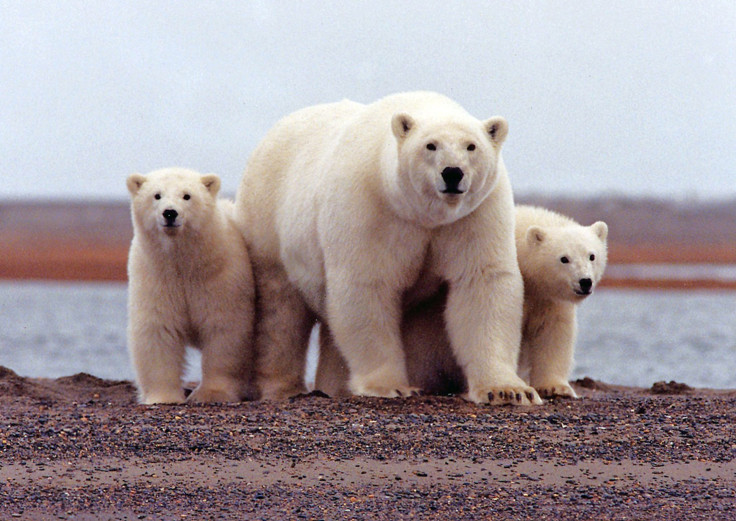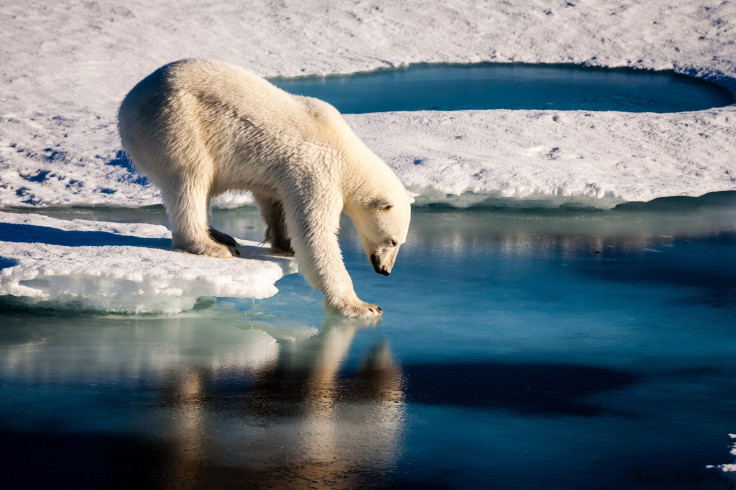Polar Bears Threatened By Toxic Pollutants, Not Just Climate Change And A Warming Arctic

As if the ravages of climate change were not catastrophic enough already, polar bears have another danger to watch out for: toxic pollutants. A study found that risk from persistent organic pollutants (POPs) in the Arctic is low for seals, but high for polar bears, especially the cubs.
Published in the journal Environmental Toxicology and Chemistry, the study said: “The ecotoxicological risk for seals, bears, and bear cubs was estimated by applying the concentration addition concept. The risk of POP mixtures was very low in seals. By contrast, the risk was two orders of magnitude higher than the risk threshold for adult polar bears and even more (three orders of magnitude above the threshold) for bear cubs fed with contaminated milk.”
POPs are chemicals that don’t degrade over long periods of time, accumulate in living beings, travel long distances and are toxic to both humans and wildlife. They are regulated by the Stockholm Convention on POPs, signed in 2001 and effective since May 2004. Though they are found all over the planet, the risk to living organisms is highest in polar areas since POPs are especially persistent in cold climates, as well as owing to the diet and high fat content of animals that live there, the study said.
Because of regulation, legacy POPs have seen a decrease since the 1980s, but the contribution of newer POPs is increasing. These toxins also exhibit the property of biomagnifications, which is the increasing concentration of a substance in the body tissues of animals at successively higher levels in the food chain. This property makes animals at the top level of any food chain, like polar bears in the Arctic, especially vulnerable.
“The results demonstrate that international control measures are effective at reducing the risk to ecosystems. Nevertheless it is fundamental to continuously implement the control of new and emerging contaminants,” study co-lead author Marco Vighi said in a statement.

The assessment was based on review of literature data from the last 40 years, and it estimated the concentration of 19 chemicals for the three animals at the highest level of the Arctic food chain: Arctic cod, ringed seals and polar bears. And using what it called a conservative approach, the study put the probability of toxicological risks for bears as high, citing the endocrine-disrupting effects of POPs that could endanger the growth and development of bear cubs.
“This work is the first attempt to quantify the overall risk of POPs for the Arctic ecosystem and to define a ranking in order to highlight the most dangerous chemicals in the mixture,” Sara Villa, co-lead author of the study, said in the statement.
In its conclusion, the study, titled “Risk of POP mixtures on the Arctic food chain,” warns: “The extremely high level of the risk and the very slow decrease estimated to have occurred over the last 20 years (in spite of stringent control measures) indicate that POPs represent a serious environmental concern on the planetary level. Moreover, the observed changes in the composition of the mixture highlight the fact that more attention must be paid to emerging contaminants.”
© Copyright IBTimes 2024. All rights reserved.











